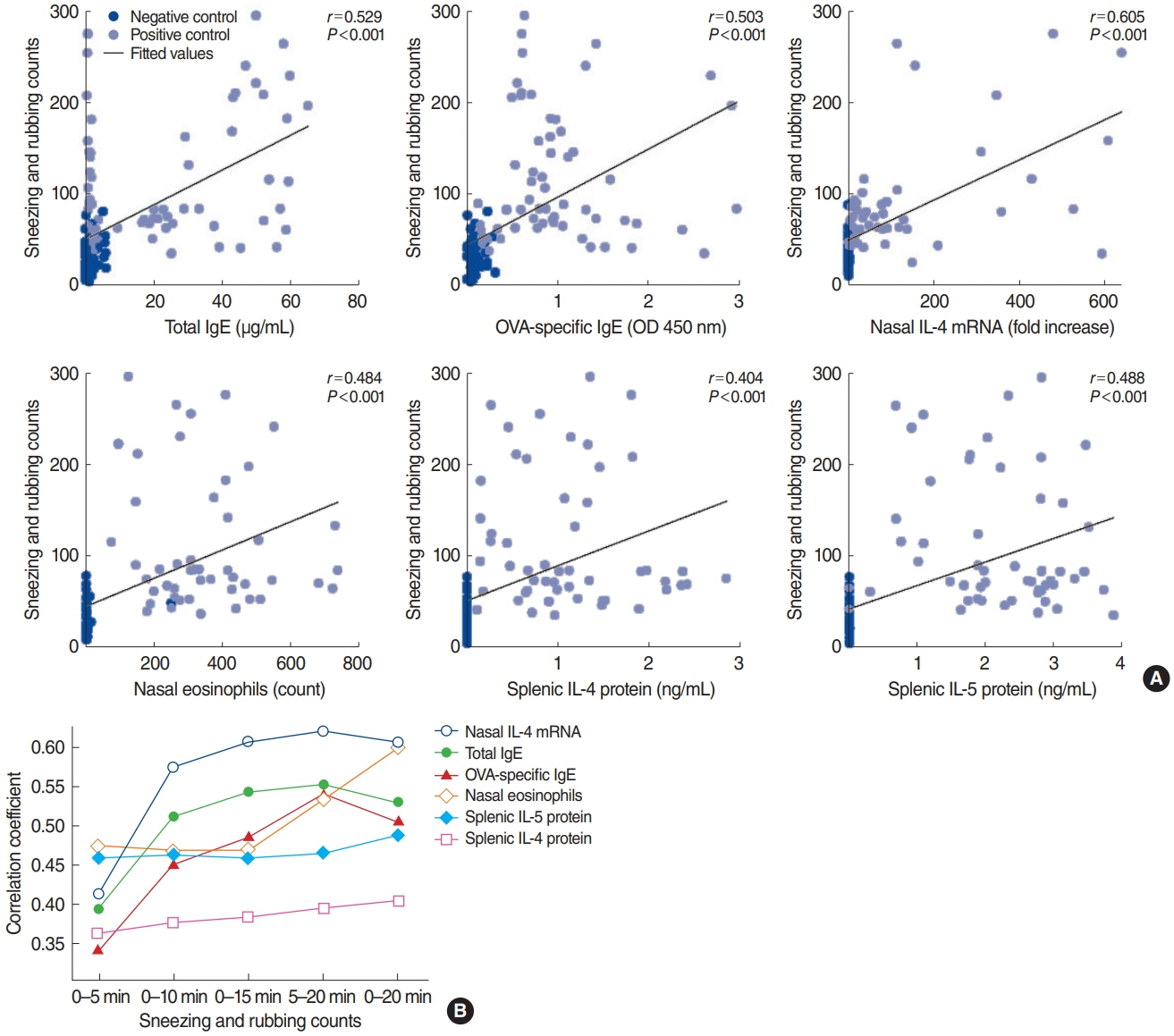Clin Exp Otorhinolaryngol.
2020 Aug;13(3):308-311. 10.21053/ceo.2019.02005.
Sneezing and Rubbing Counts in Allergic Rhinitis Mouse Models Are a Reliable Indicator of Type 2 Immune Response
- Affiliations
-
- 1Department of Otorhinolaryngology-Head and Neck Surgery, Soonchunhyang University College of Medicine, Cheonan, Korea
- 2Department of Otorhinolaryngology, Dankook University College of Medicine, Cheonan, Korea
- 3Beckman Laser Institute Korea, Dankook University College of Medicine, Cheonan, Korea
- KMID: 2504927
- DOI: http://doi.org/10.21053/ceo.2019.02005
Figure
Reference
-
1. Wang XD, Zheng M, Lou HF, Wang CS, Zhang Y, Bo MY, et al. An increased prevalence of self-reported allergic rhinitis in major Chinese cities from 2005 to 2011. Allergy. 2016; Aug. 71(8):1170–80.
Article2. Demoly P, Bousquet PJ, Mesbah K, Bousquet J, Devillier P. Visual analogue scale in patients treated for allergic rhinitis: an observational prospective study in primary care: asthma and rhinitis. Clin Exp Allergy. 2013; Aug. 43(8):881–8.3. Almansouri HM, Yamamoto S, Kulkarni AD, Ariizumi M, Adjei AA, Yamauchi K. Effect of dietary nucleosides and nucleotides on murine allergic rhinitis. Am J Med Sci. 1996; Nov. 312(5):202–5.
Article4. Mo JH, Kang EK, Quan SH, Rhee CS, Lee CH, Kim DY. Anti-tumor necrosis factor-alpha treatment reduces allergic responses in an allergic rhinitis mouse model. Allergy. 2011; Feb. 66(2):279–86.
Article5. Samivel R, Kim DW, Son HR, Rhee YH, Kim EH, Kim JH, et al. The role of TRPV1 in the CD4+ T cell-mediated inflammatory response of allergic rhinitis. Oncotarget. 2016; Jan. 7(1):148–60.
Article6. Aoishi K, Takahashi H, Hato N, Gyo K, Yokota M, Ozaki S, et al. Treatment of allergic rhinitis with intranasal infusion of botulinum toxin type A in mice. Life Sci. 2016; Feb. 147:132–6.
Article7. Im YS, Lee B, Kim EY, Min JH, Song DU, Lim JM, et al. Antiallergic effect of gami-hyunggyeyeongyotang on ovalbumin-induced allergic rhinitis in mouse and human mast cells. J Chin Med Assoc. 2016; Apr. 79(4):185–94.
Article8. Bae JS, Kim JH, Kim EH, Mo JH. The role of IL-17 in a lipopolysaccharide-induced rhinitis model. Allergy Asthma Immunol Res. 2017; Mar. 9(2):169–76.
Article9. Seo MY, Kim KR, Lee JJ, Ryu G, Lee SH, Hong SD, et al. Therapeutic effect of topical administration of red onion extract in a murine model of allergic rhinitis. Sci Rep. 2019; Feb. 9(1):2883.
Article
- Full Text Links
- Actions
-
Cited
- CITED
-
- Close
- Share
- Similar articles
-
- Principles and Application of Mouse Model of Allergic Rhinitis
- Allergic Rhinitis Mouse Model
- Understanding the Mouse Model of Respiratory Allergic Diseases
- Strain-Specific Differences in House Dust Mite (Dermatophagoides farinae)-Induced Mouse Models of Allergic Rhinitis
- Effect of Staphylococcal Enterotoxin on the Development of Allergic Rhinitis in Mice



